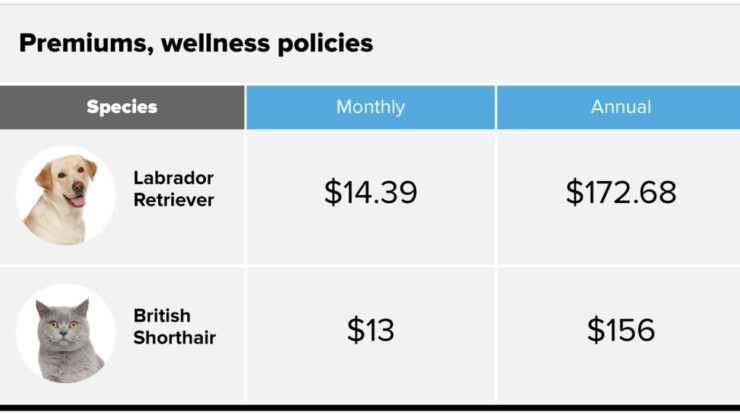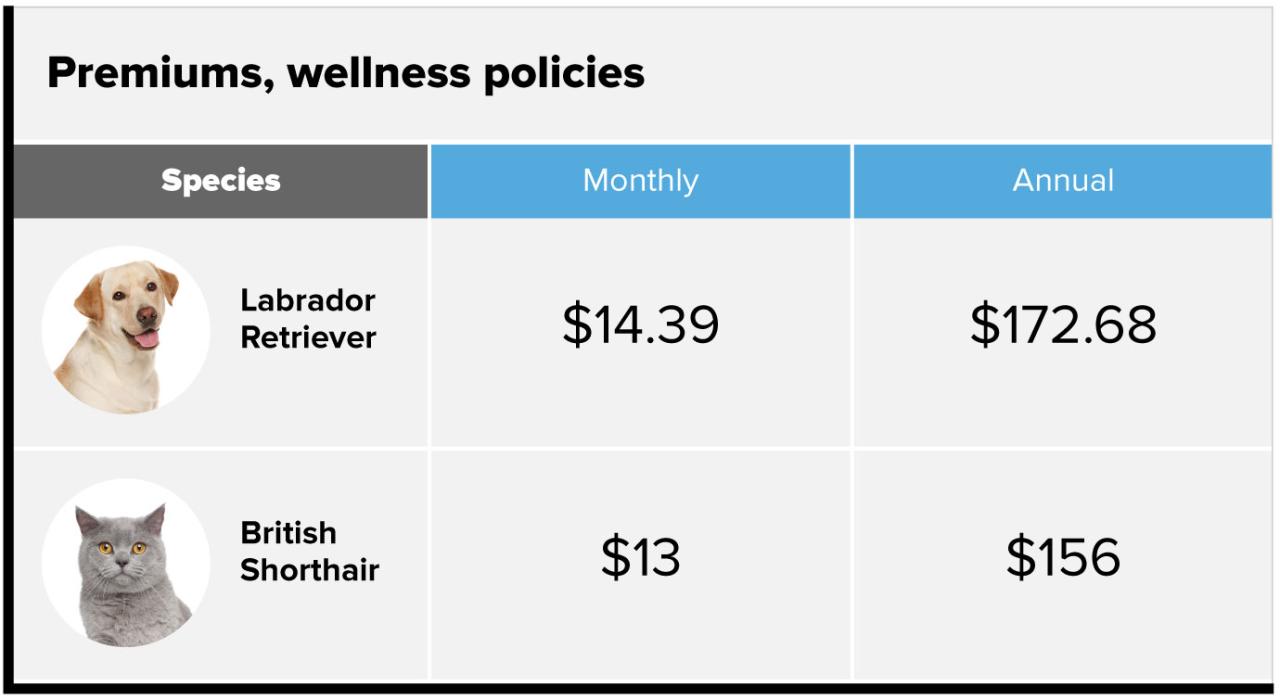
When does pet insurance kick in? Understanding the waiting periods associated with pet insurance policies is crucial for pet owners. This guide will delve into the different types of waiting periods, their implications, and strategies for navigating them effectively.
Pet insurance provides peace of mind and financial protection for pet owners, but it’s important to be aware of the waiting periods before coverage begins. These periods vary depending on the type of coverage and insurance company, and can impact access to veterinary care and treatment options.
Understanding Pet Insurance Activation Timelines
Pet insurance policies typically have waiting periods before coverage begins. These waiting periods vary depending on the type of coverage and the insurance company. It’s important to understand these waiting periods to ensure your pet is covered when you need it.
Waiting Periods for Different Coverage Types
- Accident-only coverage:This coverage typically has a waiting period of 24 hours.
- Illness coverage:This coverage usually has a waiting period of 14 days.
- Wellness coverage:This coverage may not have a waiting period, but it’s important to check the policy details.
Exceptions to Waiting Periods
There are some exceptions to these waiting periods. For example, some insurance companies offer a “no waiting period” option for accident-only coverage. This option is typically more expensive, but it can provide peace of mind knowing that your pet is covered immediately.
Types of Waiting Periods in Pet Insurance
Pet insurance policies typically include waiting periods, which are periods of time that must pass before coverage begins. Different types of waiting periods exist, each with its own implications.
Accident-Only Coverage Waiting Period
An accident-only coverage waiting period applies to injuries sustained in accidents. This waiting period typically ranges from 24 hours to 14 days. During this time, any expenses related to accident-related injuries are not covered.
Illness-Only Coverage Waiting Period
An illness-only coverage waiting period applies to illnesses or diseases diagnosed after the policy’s effective date. This waiting period can vary from 14 to 30 days or even longer for certain pre-existing conditions. During this time, any expenses related to illnesses are not covered.
Comprehensive Coverage Waiting Period, When does pet insurance kick in
A comprehensive coverage waiting period applies to both accidents and illnesses. This waiting period is typically the longest, ranging from 14 to 30 days or more. During this time, any expenses related to accidents or illnesses are not covered.
Impact of Waiting Periods on Pet Owners
Waiting periods in pet insurance policies can have significant financial implications for pet owners. During the waiting period, pet owners are responsible for the full cost of any veterinary expenses incurred, which can be a substantial financial burden, especially for unexpected or emergency situations.
Pet insurance usually kicks in within a few days or weeks after you purchase the policy, depending on the waiting period specified by your insurer. During this waiting period, you’re responsible for any veterinary expenses incurred. However, if you’re looking to get a better idea of the costs associated with car ownership, you might want to check out how much is car insurance in va.
Returning to the topic of pet insurance, it’s important to note that the waiting period may vary for different types of coverage, such as accident-only or comprehensive coverage.
Moreover, waiting periods can affect access to veterinary care and treatment options. If a pet requires immediate medical attention during the waiting period, the owner may be forced to delay treatment due to financial constraints. This delay can compromise the pet’s health and well-being, potentially leading to more severe health issues and higher long-term costs.
Generally, pet insurance takes effect after a waiting period of 14-30 days. During this time, you’re responsible for any veterinary expenses. On the other hand, if you need workers’ compensation insurance right away, consider same day workers comp insurance.
It provides immediate coverage, protecting you from financial burdens in case of workplace injuries. Returning to pet insurance, once the waiting period expires, you can submit claims for covered expenses and receive reimbursement according to your policy’s terms.
Impact on Emergency Care
Waiting periods can be particularly problematic for emergency veterinary care, which is often time-sensitive and expensive. If a pet experiences an accident or sudden illness during the waiting period, the owner may face a difficult choice between seeking immediate medical attention or waiting until the waiting period expires.
Delaying emergency care can have serious consequences for the pet’s health and survival.
If you’re looking to get pet insurance, you’ll want to know when it kicks in. The waiting period for pet insurance can vary, so it’s important to check with your provider. In the meantime, if you’re looking for car insurance, you can check out how to get car insurance reddit.
Pet insurance usually kicks in after a certain number of days, typically around 14 or 30 days. This waiting period gives the insurance company time to verify your pet’s health and make sure they’re not already sick or injured.
Impact on Preventative Care
Waiting periods can also affect access to preventative care, such as vaccinations, spaying/neutering, and routine check-ups. These services are crucial for maintaining a pet’s health and well-being, but they can be costly. If a pet owner cannot afford to pay for these services during the waiting period, the pet may miss out on essential preventative care, increasing the risk of future health problems.
Strategies for Navigating Waiting Periods: When Does Pet Insurance Kick In
Managing waiting periods before pet insurance coverage begins can be challenging for pet owners. Here are some strategies to minimize financial burdens and ensure timely care for your furry friend:
Financial Planning
- Establish a pet emergency fund to cover unexpected expenses during the waiting period.
- Consider using a credit card with a low APR to pay for veterinary bills and repay them once coverage begins.
- Explore pet insurance policies that offer a “retroactive coverage” option, which may reimburse expenses incurred before the waiting period ends.
Preventive Care
- Prioritize preventive care, such as vaccinations, regular checkups, and dental cleanings, to minimize the likelihood of unexpected illnesses or injuries during the waiting period.
- Take advantage of free or low-cost veterinary services offered by shelters, animal welfare organizations, or community clinics.
- Consider enrolling in a pet wellness plan that provides discounted preventive care services.
Communication with Veterinarian
- Inform your veterinarian about your pet’s insurance coverage and the waiting period.
- Discuss treatment options and costs with your veterinarian before proceeding with any procedures.
- Ask about payment plans or discounts for services rendered during the waiting period.
Consideration of Breed and Health Status
- Research the potential health issues associated with your pet’s breed and consider the waiting periods for those specific conditions.
- If your pet has any pre-existing conditions, ensure that you understand the waiting periods and coverage limitations for those conditions.
- Consider purchasing a pet insurance policy with shorter waiting periods or no waiting periods for pre-existing conditions, if possible.
Exceptions and Special Circumstances
While standard waiting periods are common, there may be exceptions or special circumstances that affect when pet insurance coverage begins.One exception is when a pet owner purchases a policy for a pre-existing condition. In this case, coverage for that specific condition may not start until a certain period has passed, such as 30 or 60 days.
This waiting period is intended to prevent pet owners from taking out insurance only after their pet has developed a health issue.Another exception is when a pet is adopted from a shelter or rescue organization. In some cases, these organizations may offer a short-term pet insurance policy that covers the pet for a limited time, such as 30 days.
So, when does pet insurance kick in? Well, it depends on the policy you choose. Some policies have a waiting period before coverage begins, while others start covering your pet right away. If you’re not sure when your pet insurance will kick in, be sure to compare insurance quotes to find the best policy for you.
That way, you can make sure your pet is covered when you need it most.
This can provide peace of mind to new pet owners while they are getting their pet settled into their new home and taking them to the veterinarian for a checkup.
Comparison of Waiting Periods in Different Insurance Companies
The waiting period for pet insurance can vary depending on the company and the type of coverage. Here’s a comparison table to help you understand the differences:
Note:This table is for illustrative purposes only and may not reflect the exact waiting periods offered by all pet insurance companies. It’s important to check with the specific company you’re considering for the most up-to-date information.
Waiting Periods for Different Types of Coverage
| Coverage | Company A | Company B | Company C | Company D |
|---|---|---|---|---|
| Accident and Illness | 2 days | 5 days | 7 days | 10 days |
| Dental | 15 days | 30 days | 60 days | 90 days |
| Wellness | None | None | None | None |
Key Differences and Similarities
- The waiting period for accident and illness coverage is typically shorter than the waiting period for dental coverage.
- Wellness coverage generally has no waiting period.
- The waiting period for dental coverage can vary significantly between companies.
- Some companies may offer shorter waiting periods for certain breeds or ages of pets.
Conclusive Thoughts

Navigating waiting periods in pet insurance requires careful planning and financial preparedness. By understanding the different types of waiting periods, their implications, and strategies for managing them, pet owners can ensure their furry companions receive timely and necessary veterinary care while minimizing financial burdens.
Quick FAQs
What is the typical waiting period for pet insurance?
The typical waiting period for pet insurance coverage is 14 days for accidents and 30 days for illnesses.
Are there any exceptions to the waiting periods?
Yes, some insurance companies may offer shorter waiting periods or waive them altogether for certain conditions or pre-existing conditions.
How can I minimize the financial burden of waiting periods?
Consider setting aside an emergency fund for unexpected veterinary expenses during the waiting period. Additionally, explore pet insurance policies that offer coverage for accidents or illnesses from day one.

